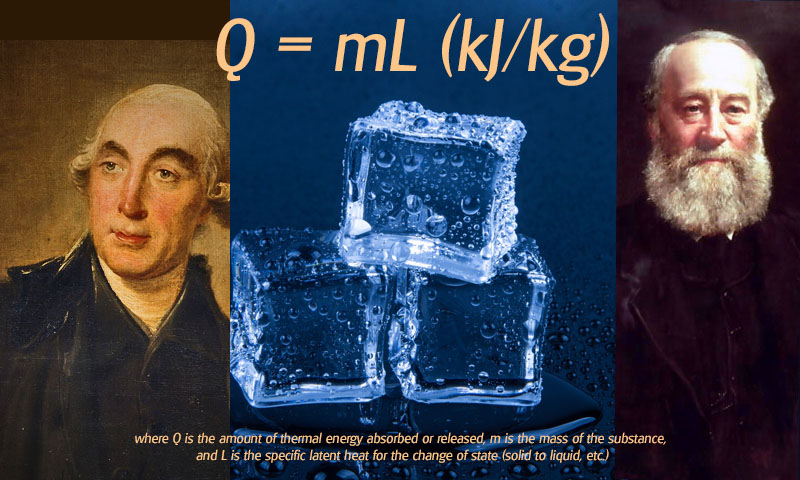
Latent Heat and the Joule
Joseph Black (1728-99) was educated in Belfast, Glasgow and Edinburgh and worked in the latter two universities. He defined the difference between heat and temperature, leading to his theory of latent heat, explained in his lecture at Glasgow in 1762. Without the existence of latent heat, there would be torrential flooding when ice and snow melt and explosions when water vaporises. Latent heat ensures slow transitions from one state to the other, while their temperatures hold steady.
He went on to name ‘specific latent heat’ as the amount of energy, later defined in ‘joules’ (J), required by a particular substance to utilise its latent heat capacity during a change in state, e.g. ice needs 334,000J , or 334kJ, to melt a 1kg block. One of Black’s students was James Watt (1736-1819), who used the latent heat principle in his industrial applications of steam.
The Joule was named after Lancashire-born James Prescott Joule (1818-89). He had a fortunate upbringing which spurred his scientific interests, including being tutored by none other than John Dalton (1766-1844), a pioneer of atomic theory among other achievements. Joule was fascinated by electricity and his ground-breaking work on the relationship between heat and energy was eventually accepted and developed by the big institutions.
(Images LtoR: Joseph Black by David Martin at Wikimedia Commons / CC BY-SA 4.0, ice cubes at publicdomainpictures.net, James Joule at picryl.com / Public domain)
